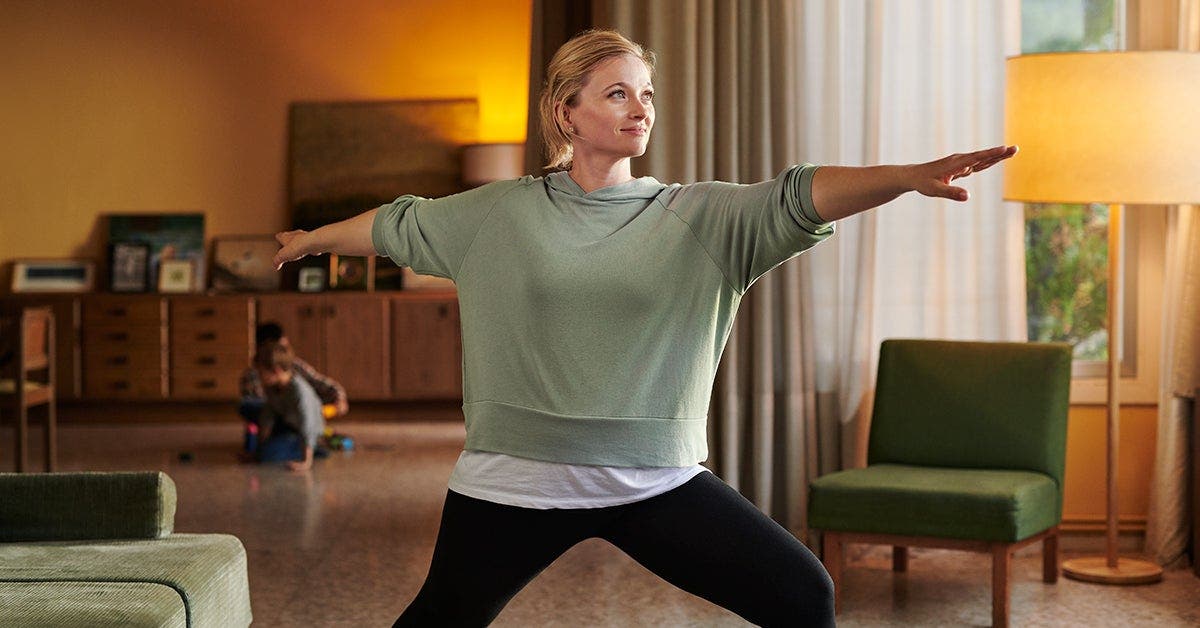4 Feel-Great Stretches You've Got to Try


If you’re like many people, you probably know that it’s important to stretch regularly so you can stay flexible and prevent injuries. But chances are, you only stretch in a single plane of motion — most likely, forward and back. But that's not how we move through everyday life, says Orlando-based ACE- and ACSM-certified fitness expert Leslee Bender.
“Your body functions in three planes of motion all the time," explains Bender, creator of the Bender Ball for core and flexibility training. "So you need to lengthen the muscles and improve range of motion for joints three-dimensionally, not just in one plane.” This type of multi-dimensional flexibility, called functional flexibility, "is really about having a body that’s able to do what’s asked of it in everyday life pain-free."
The key, says Bender, is to stretch different muscle groups through all three planes of motion — the sagittal plane (front to back), the frontal plane (side to side), and the transverse plane (involving rotation or pivoting). This can lead to improved muscle elasticity, enhanced core strength, better posture and a vastly improved range of motion. The combination of benefits should reduce any pain you feel as well as your risk of injury, she adds.
These four stretches will enhance your functional flexibility in normally tight areas of your body. Some of them are subtle but don’t be fooled; they can lead to noticeable improvements after just one session.
Loosen your... calves, hamstrings and glutes
Standing with your feet hip-width apart, bring your left foot forward, 18 to 24 inches. Extend your arms straight out in front of you at shoulder level: Reach forward until you feel your right calf lengthen, then fluidly shift back to an upright position (with your arms out in front). Repeat this fluid motion forward and back 10 times; switch legs.
Loosen your... quads, hip flexors and spine
With your left foot in front of your right (as in the previous move), reach both arms up to the ceiling (keep your shoulders in their sockets), until you feel a stretch in your right hip flexor. Gently press your right hip forward until you feel it lengthen more, as you bring your arms down to your sides. Return to the starting position. Repeat 10 times then switch sides.
Loosen your... hip flexors, glutes and shoulders
From the same starting position as the previous stretches (with your left foot in front of your right), hinge forward at the hips and reach your hands down below your left (front) knee. Smoothly return to an upright position. Then, slowly lean to the left, bringing your right arm overhead and your left arm down towards the floor, until you feel a stretch in your right hip flexor. Without returning to the starting position, reach your left arm straight in front of you, as you rotate your left hip slightly forward; pause when you feel the stretch in your hip and glutes, then return to the starting position. Repeat this sequence 10 times, then switch sides.
Loosen your... shoulders, hips and obliques
Stand with your right foot about 10 inches away from a wall, with your feet slightly more than shoulder-width apart and arms overhead. Bring your left arm out to the side at shoulder level, bending your right knee (keep your left knee straight) and shifting your weight as you try to touch your right hip to the wall, rotating slightly to the right at the waist. Return to the start position. Repeat 10 times, then switch sides.
Do these stretches at least three times a week, and you'll feel a greater range of motions in your joints. The result: “This can make everyday movement feel better — and it can also make exercise feel better,” explains Bender. “An inflexible body is a weak body; a flexible body is strong. When you gain the ability to move smoothly and comfortably through all three planes of motion – front to back, side to side and rotationally – you’ll become stronger, more flexible, and less prone to injury.”
